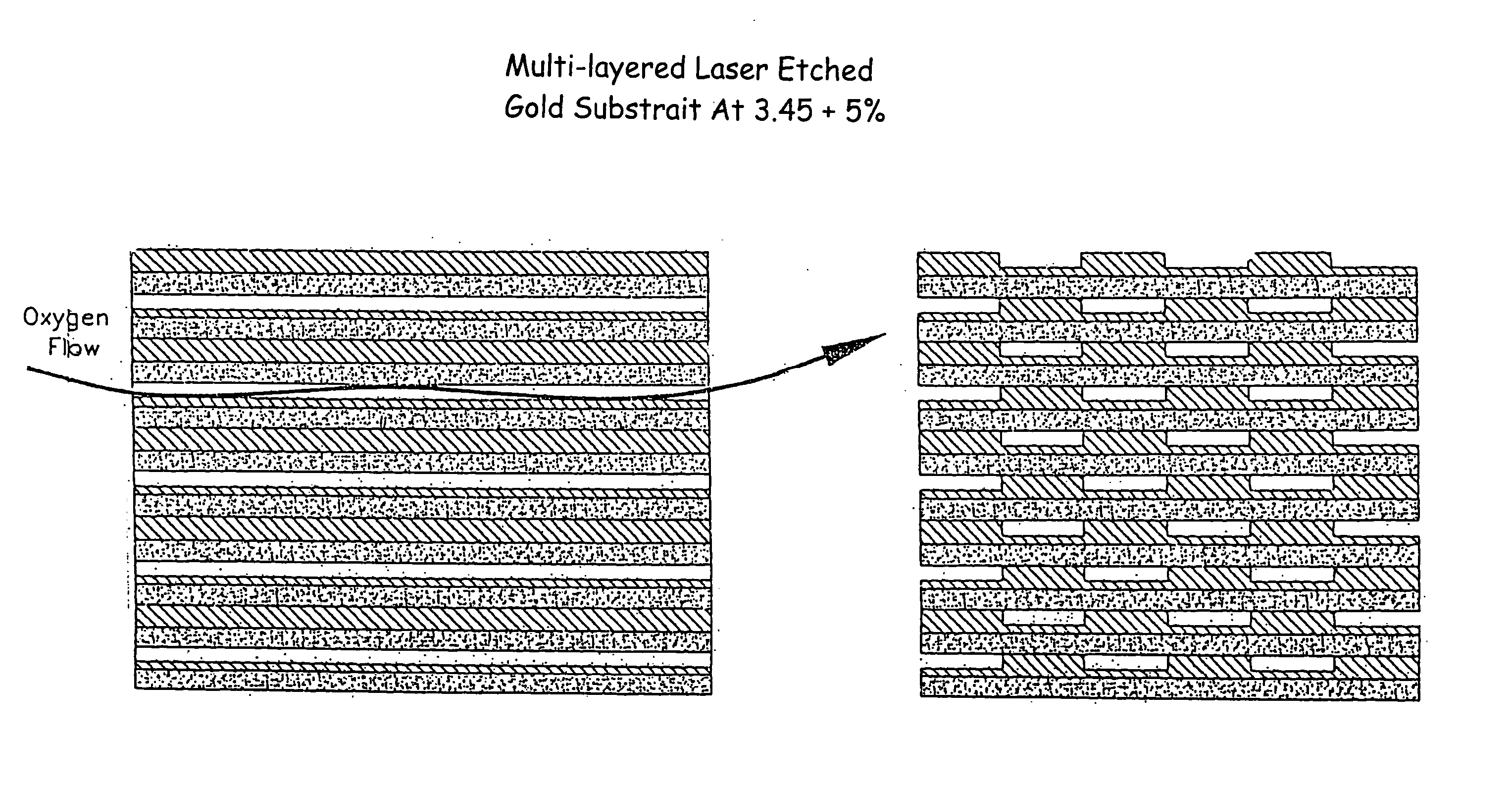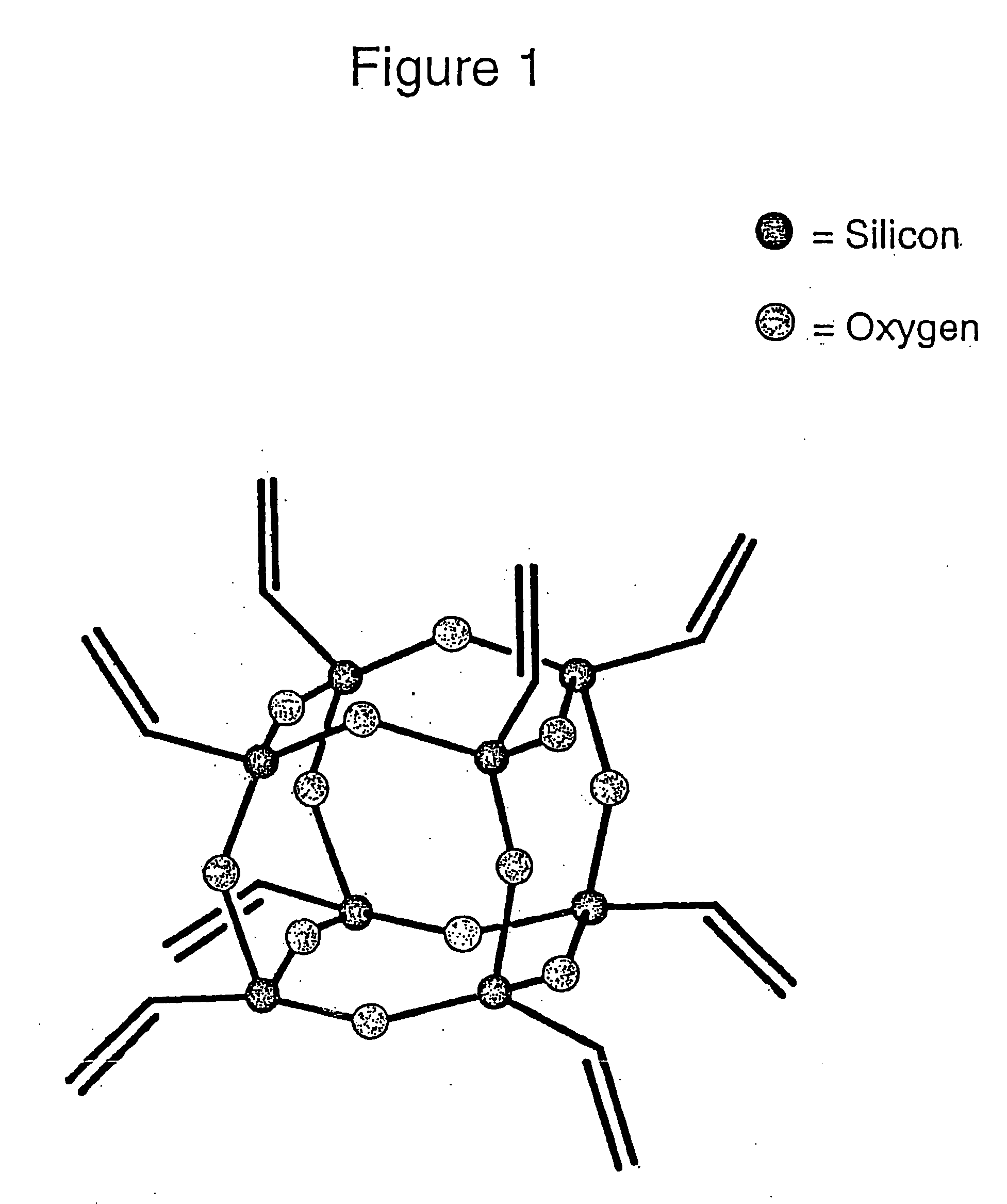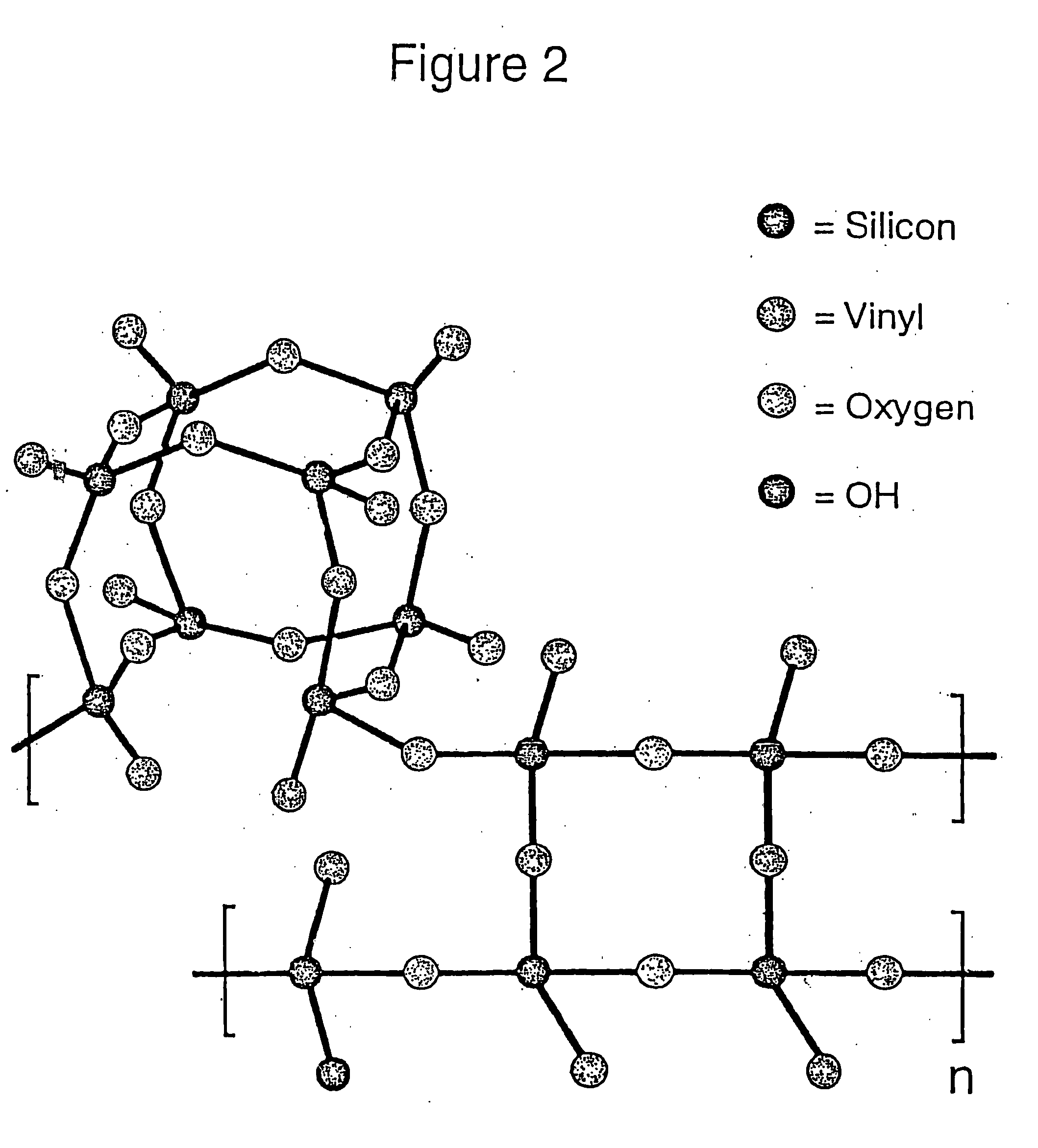Porous gas permeable material for gas separation
a gas separation and permeable material technology, applied in the direction of separation process, membrane, filtration separation, etc., can solve the problems of not having attempted to create holes of a specific size, nothing in previous approaches that included steps, etc., to achieve high selectivity, high permeance, and large volume fraction porosity
- Summary
- Abstract
- Description
- Claims
- Application Information
AI Technical Summary
Benefits of technology
Problems solved by technology
Method used
Image
Examples
example 1
[0119] Oxygen having a working diameter of 3.46 Å (a pore diameter of 3.55 Å is used for ease of passage) has an area of A=(12D)2πApore=(3.55 A2)2π=(1.77)2π=9.84 A1 square meter=1010×1010 Å2=1020 Å25% open=.05×1020 Å2[0120] number of pores is .05×1020A29.90 A2=5.05×1017
(1.77 Å produces an Apore=9.84 Å whereas 1.78 Å produces an Apore=9.95 Å, so an average of 9.90 Å is used)
Time of passage taken as 1×10−6 sec; then 5.05×10171×10-6=5.05×1023[0121] molecules per second [0122] 5.05×1023 molecules of oxygen per second
One mole of oxygen is 32 grams. Avagadro's number is 6.02×1023
Therefore: 5.05×10236.02×1023×32=0.83 mole×32 g / mole=26.6 g / sec.
Per day: 0.83 mole / sec of oxygen gives since
24 hours is 84,600 sec
this is: [0123] 0.83 mole / sec×84,600 sec=70,218 moles [0124]×32 g / mole=(71,903,232 g / day / m2) (158,203 lbs. / day / m2) (79.1 tons / day / m2)
[0125] Although many methods of synthesis for the gas separator are possible, a silicon oxygen polymeri...
example 2
[0132] A porous film is prepared by mixing 30 wt % of octa vinyl POSS with 68 wt % polydimethylsiloxane (a silicone film former) and curing with 2 wt % benzoyl peroxide at 60° C. for 1 hour. The combined mixture is coated on a 0.2 mμ stainless steel filter support.
example 3
[0133] A porous film for separating carbon dioxide and methane is prepared by mixing 40 wt % gamma-cyclodextrin-hydroxypropyl derivative with 60 wt % VixTx (POSS vinyl resin). This mixture is dissolved in denatured alcohol and cast into a film on a 0.2 mμ stainless steel support. No curing agent is required.
PUM
| Property | Measurement | Unit |
|---|---|---|
| Time | aaaaa | aaaaa |
| diameter | aaaaa | aaaaa |
| sizes | aaaaa | aaaaa |
Abstract
Description
Claims
Application Information
 Login to View More
Login to View More - R&D
- Intellectual Property
- Life Sciences
- Materials
- Tech Scout
- Unparalleled Data Quality
- Higher Quality Content
- 60% Fewer Hallucinations
Browse by: Latest US Patents, China's latest patents, Technical Efficacy Thesaurus, Application Domain, Technology Topic, Popular Technical Reports.
© 2025 PatSnap. All rights reserved.Legal|Privacy policy|Modern Slavery Act Transparency Statement|Sitemap|About US| Contact US: help@patsnap.com



